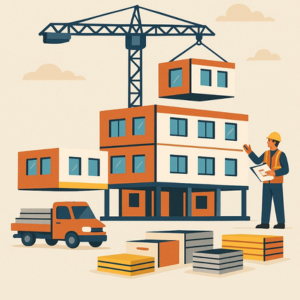MODULAR
 |

Modular Precast Concrete construction is revolutionizing the building industry by offering significant time and cost savings compared to traditional construction methods.
Speed of Construction
Off-Site Fabrication - Such as walls, Floors, Beams, and Columns—are manufactured in a controlled factory environment, while site preparation and foundations are being completed. This Parallel Workflow reduces the timeline.
Quick Assembly: They can be installed rapidly, often within days rather than weeks. This is particularly beneficial for projects with tight deadlines, like apartment buildings, warehouses, and data centers.
Weather Independence: Since most of the work happens off-site in controlled conditions. Precast Construction is less susceptible to weather delays, which are a major source of unpredictability in Onsite Concrete.
Cost Efficiency Reduced Labor Costs: Because components are pre-made, less on-site labor is needed (For - Formwork, Curing, and Finishing).
Quality and Precision Precast modules are made with tight tolerances and using High-Strength Mixes. This results in Consistent Quality, Consistent Finishes and Optimal Structural Integrity.
Repeatability for Large Projects In Large-Scale or repetitive projects (e.g., apartment buildings, hotels, parking structures), Modular Precast offers Economies Of Scale: Standardized Components can be reused across units.
Shining a light on over 80 Construction Categories, with unlimited potential for Sub Categories - Watch our Community grow!

